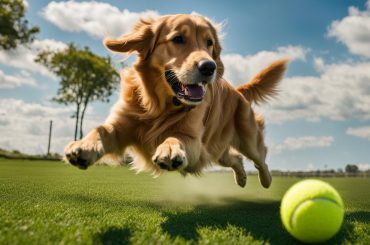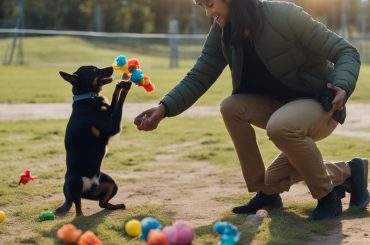As a responsible pet parent, address any biting behavior in your dog. Not only can it be painful and distressing, but it can also lead to more serious issues if left unchecked. Fortunately, there are effective techniques to teach your dog to stop biting and promote positive behavior.
Whether you’re dealing with a puppy who is still learning bite inhibition or an adult dog who hasn’t been properly trained, this article will guide you in preventing and curbing biting behavior. From understanding the causes of biting to implementing training techniques and seeking professional help when needed, you can set your dog on the path to improved behavior and a safer environment for everyone involved.
Key Takeaways:
- Bite inhibition refers to a dog’s ability to control the force of his mouthing.
- Teach your dog bite inhibition by yelping if he bites too hard during play.
- Redirect your dog’s biting behavior by providing chew toys and encouraging noncontact forms of play.
- Utilize a time-out procedure if other methods don’t work, and be consistent in enforcing boundaries.
- If necessary, seek professional help from a Certified Professional Dog Trainer or Certified Applied Animal Behaviorist.
Understanding Mouthing in Dogs
Mouthing is a common behavior in dogs, but you should understand the difference between playful mouthing and aggressive biting. Playful mouthing is a normal dog behavior that is often seen during play or interaction. It is usually less painful and is a way for dogs to engage and communicate with their owners. On the other hand, aggressive biting is a more serious behavior that can indicate fear, frustration, or aggression. You should be able to differentiate between the two and take appropriate action.
Normal dog behavior includes mouthing as a way to explore the world and interact with their environment. Puppies often learn bite inhibition during play with other puppies, where they learn to control the force of their mouthing. However, adult dogs may still engage in mouthing behavior, and it can be more difficult to suppress in them compared to puppies. Most mouthing is harmless, but it is essential to address any aggressive biting behavior to ensure the safety of both humans and dogs.
I recommend that you determine whether your dog’s biting fits the description of aggressive behavior. Aggressive biting is usually more intense, often accompanied by growling, snarling, or stiff body language. If you suspect your dog’s biting is aggressive, it is advisable to consult with a qualified professional, such as a Certified Professional Dog Trainer or a Certified Applied Animal Behaviorist, who can provide guidance and assistance.
A professional can help assess your dog’s behavior, provide appropriate training techniques, and develop a tailored plan to address any aggressive biting issues. By understanding the underlying causes of your dog’s behavior and working with a professional, you can effectively manage and modify their mouthing habits.
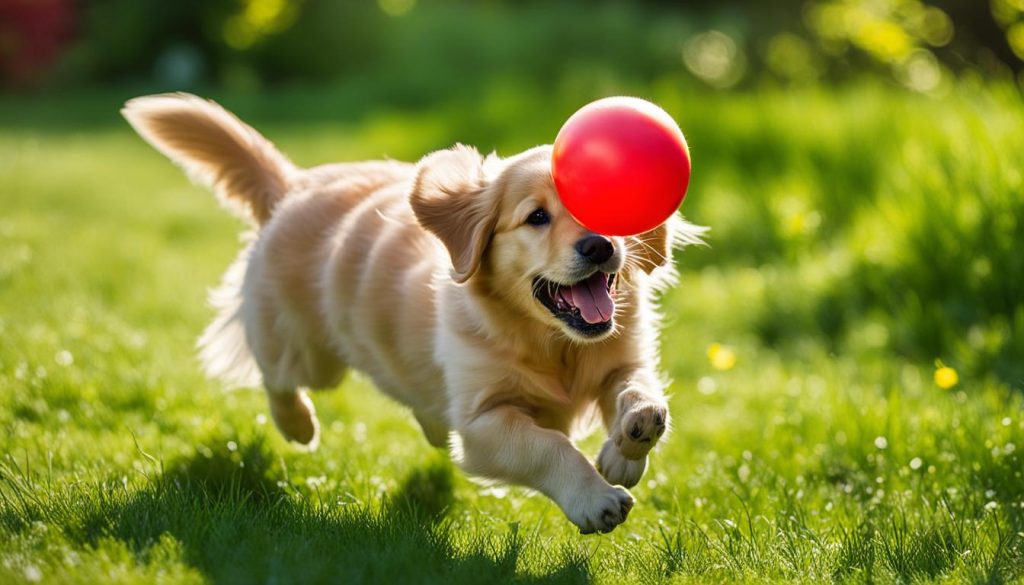
| Playful Mouthing | Aggressive Biting |
|---|---|
| Usually less intense | More intense and forceful |
| Accompanied by wagging tail and relaxed body language | Accompanied by growling, snarling, or stiff body language |
| May involve the use of toys or objects | Directly targets humans or other animals |
| Can be redirected with appropriate toys or chews | May require professional intervention and management |
Bite Inhibition Training for Dogs
Teaching dogs to be gentle and controlling the force of their mouthing is an essential aspect of bite inhibition training. By helping dogs learn to use their mouths gently, pet parents can prevent hard bites and promote safer play and interaction. Bite inhibition refers to a dog’s ability to control the force of his mouthing, and it is vital for dogs to learn this skill to avoid causing harm unintentionally.
To teach bite inhibition to your dog, start by allowing him to mouth on your hands during play. If your dog bites too hard, give a high-pitched yelp to signal pain and immediately withdraw your hand. This yelp imitates the reaction of a fellow puppy during play and teaches the dog that his biting is causing discomfort. Repeat this process until your dog learns to play with your hands gently, controlling the force of his mouthing.
Consistency is key when implementing bite inhibition training. You should respond consistently to hard bites by yelping and withdrawing your hand each time. This helps your dog understand that biting too hard ends the playtime and reduces the likelihood of rough mouthing. Reinforce gentle play by rewarding your dog with praise and treats when he mouths softly. Over time, with patience and consistent training, your dog will learn to use his mouth gently and prevent hard bites.
| Benefits of Bite Inhibition Training | How to Teach Bite Inhibition |
|---|---|
| Prevents injuries during play and interaction | Allow your dog to mouth on your hands during play |
| Ensures safer interactions with children, elderly individuals, and other pets | Yelp loudly and withdraw your hand when your dog bites too hard |
| Promotes responsible dog ownership | Consistently respond to hard bites by ending playtime |
| Enhances the bond between pet parents and dogs | Reinforce gentle play with praise and treats |
bite inhibition training should be conducted in conjunction with other forms of training, such as redirecting and providing appropriate chew toys. By using a combination of techniques, pet parents can effectively teach their dogs not to bite and create a safe and enjoyable environment for everyone.
Redirecting Your Dog’s Biting Behavior
When it comes to curbing your dog’s biting behavior, redirecting their focus is an effective technique. One way to do this is by providing chew toys as an alternative to biting your fingers or toes. Having a variety of interesting and enticing toys available can help redirect their biting instincts towards an appropriate object.
Encouraging noncontact forms of play, such as fetch or tug-of-war, can also help redirect their biting behavior away from your hands. These activities provide a positive outlet for their energy and natural instincts. By engaging in these types of play, you are teaching your dog to associate playtime with toys rather than using their mouth on humans.
In addition to redirecting their biting behavior, impulse control exercises can further discourage biting. Teaching your dog commands such as sit, wait, and leave it can help them develop self-control and better understand boundaries. Incorporating these exercises into your training routine will help your dog learn to control their impulses and inhibit their biting behavior.

Examples of Noncontact Forms of Play
- Fetch
- Tug-of-war
- Hide-and-seek
Impulse Control Exercises
- Sit command
- Wait command
- Leave it command
By redirecting your dog’s biting behavior, providing chew toys, engaging in noncontact forms of play, and incorporating impulse control exercises, you can effectively teach your dog to avoid using their mouth on humans. With consistency and positive reinforcement, your furry friend will learn appropriate behavior and enjoy a happy and harmonious relationship with you.
Time-out Procedure for Mouthy Dogs
Mouthing and biting behavior in dogs can be frustrating for pet parents, especially when it becomes excessive or aggressive. One effective technique for curbing mouthy behavior is the time-out procedure. This method involves giving your dog a brief break from playtime whenever they bite too hard. Through consistent use of time-outs, you can teach your dog bite inhibition and reinforce the message that biting is not acceptable.
To implement the time-out procedure, start by yelping loudly when your dog bites too hard. This high-pitched yelp mimics the sound of a hurt littermate, communicating to your dog that their biting has caused pain. Immediately after yelping, remove your hand and walk away, leaving your dog alone for a short time-out period. The duration of the time-out can vary depending on the dog, but it should be brief enough for them to understand the consequence of their actions.
After the time-out, return to your dog and encourage them to play gently. If they bite too hard again, repeat the time-out. Gradually, as your dog learns to be gentler with their mouth, you can tighten the rules of the time-out procedure. This can involve increasing the duration of the time-out or using a leash to guide your dog to a quiet area for a time-out.
To put it simply, consistency is key when using the time-out procedure. Be patient with your dog and avoid using physical punishment or aggressive techniques. With time and consistent training, your dog can learn to control their mouthy behavior and interact with you and others in a gentle and appropriate manner.
| Benefits of Time-out Procedure for Mouthy Dogs | Considerations for Time-out Procedure |
|---|---|
|
|
Teaching Dogs to Avoid Mouthing People
When it comes to teaching dogs to avoid mouthing people, provide them with alternative options. By using toys as alternatives, you can redirect their biting behavior towards more appropriate objects. Keep a toy or chew bone with you and offer it whenever your dog tries to gnaw on your fingers or toes. This helps them understand that toys are acceptable for biting while human skin is not.
In addition to using toys, impulse control exercises can be beneficial for teaching dogs to avoid mouthing. These exercises help dogs learn to control their impulses and make better choices. Teach your dog commands such as “sit,” “wait,” and “leave it” to reinforce impulse control. By practicing these exercises regularly, your dog will become more accustomed to using their mouth gently and resisting the urge to bite.
Providing opportunities for socialization is another key aspect of teaching dogs to avoid mouthing. When dogs have the chance to interact with other friendly, vaccinated dogs, they learn proper socialization skills and expend excess energy. This can help reduce their desire to mouth or bite. Organize playdates with other dog owners or consider enrolling your dog in obedience classes to provide structured socialization opportunities.

Impulse Control Exercises for Dogs
To further reinforce impulse control in dogs and teach them to avoid mouthing, try the following exercises:
- Wait for meals: Teach your dog to wait patiently for their food by having them sit and wait before you give them the signal to eat.
- Leave it: Place a treat in your closed hand and let your dog sniff and paw at it. Only open your hand and give them the treat when they stop trying to get it.
- Stay: Practice “stay” commands to help your dog learn to control their movements and resist the urge to jump or nip.
Consistency is key when teaching dogs to avoid mouthing. I recommend that you reinforce positive behaviors consistently and provide appropriate alternatives for biting, such as chew toys. With time, patience, and consistent training, you can help your dog develop bite inhibition and improve their behavior.
Taste Deterrents for Mouthy Dogs
If your dog continues to mouth despite other training methods, you can consider using taste deterrents to discourage the behavior. Taste deterrents are substances that have an unpleasant taste and are safe for dogs to consume. They can be applied on areas of your body or clothing that your dog likes to mouth, such as hands, arms, or shoes.
By applying taste deterrent sprays, you can create an association between the unpleasant taste and the act of mouthing. This will deter your dog from biting or chewing on your skin or clothing. I recommend that you choose a taste deterrent that is safe for dogs and follow the instructions on the packaging for proper application.
Applying the taste deterrent consistently for at least two weeks is crucial to effectively deterring mouthy behavior. This allows your dog to form a strong connection between the taste and the behavior, reinforcing the negative association. Be patient and persistent in using taste deterrents, as it may take some time for your dog to fully understand and change his behavior.

Table: Comparison of Different Taste Deterrents
| Taste Deterrent | Application Method | Duration of Effectiveness |
|---|---|---|
| Bitter Apple Spray | Directly spray on the targeted area | Varies by brand, typically lasts a few hours |
| Grannick’s Bitter Apple | Apply with a cotton ball or swab | Varies by application, typically lasts a few hours |
| Sour Apple Spray | Directly spray on the targeted area | Varies by brand, typically lasts a few hours |
| Hot Sauce | Gently dab on the targeted area | Temporarily lasts for a few minutes |
Table: Comparison of different taste deterrents for mouthy dogs. You should choose a taste deterrent that is safe for dogs and consult with a veterinarian if you have any concerns about its usage.
Dealing with Puppy Mouthing
Puppy mouthing is a normal behavior as they explore their environment and go through the teething process. I recommend that you redirect your puppy’s nipping behavior in a positive and effective way. One way to do this is by providing chew toys as alternatives to your fingers or toes. When your puppy starts to nip, offer them a chew toy and encourage them to play with it instead. This helps them understand what is appropriate to bite on and teaches them to use their chew toys as alternatives.
If your puppy gets overstimulated and starts nipping, remove them from the situation and give them time to calm down. This helps them learn self-control and prevents the behavior from escalating. Additionally, praising and rewarding your puppy for good behavior can reinforce positive habits and further encourage them to avoid mouthing people.
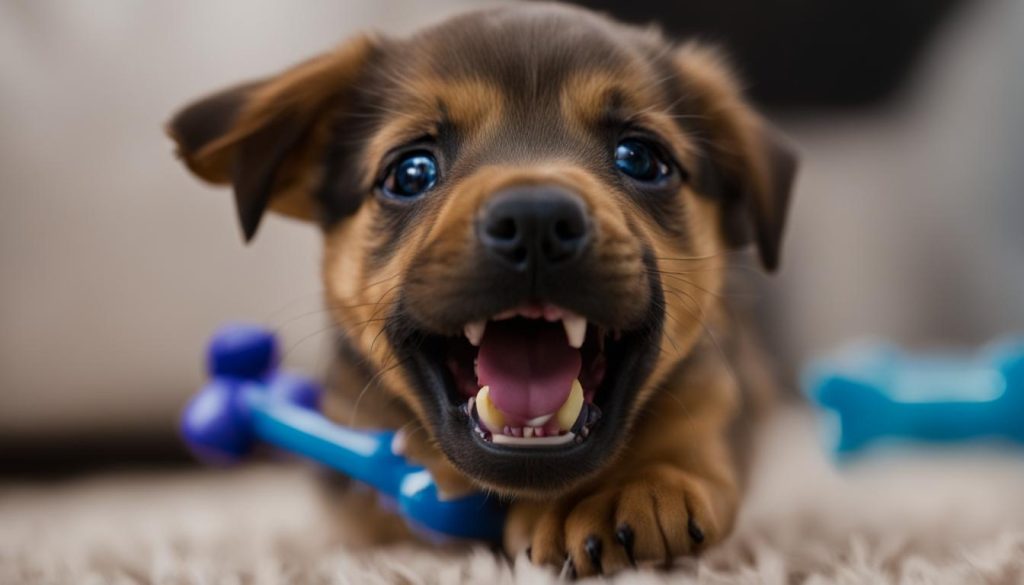
Redirecting Nipping Behavior
To successfully redirect your puppy’s nipping behavior, follow these steps:
- Always have chew toys readily available to offer as alternatives
- When your puppy starts to nip, calmly and gently say “no” and offer them a chew toy
- Praise and reward your puppy when they choose to bite on the chew toy instead
- Consistently repeat this process to reinforce the desired behavior
By redirecting your puppy’s nipping behavior and providing appropriate chew toys, you can help them develop good bite inhibition and prevent them from mouthing people. Try to be patient and consistent in your training efforts to ensure long-term success.
Consistency in Training Puppy Biting
Consistency is a crucial factor when it comes to training your puppy not to bite. By reinforcing positive behaviors, using rewards and praise, and providing consistent guidance, you can effectively teach your puppy appropriate biting behavior. Consistency in training builds trust and helps your puppy understand what is expected of them.
One way to reinforce positive behaviors is through rewards and praise. Whenever your puppy displays good behavior, such as playing gently or chewing on appropriate toys, reward them with treats and enthusiastic praise. Positive reinforcement motivates your puppy to continue exhibiting the desired behavior.
Another effective strategy is to enroll your puppy in obedience classes. These classes provide structured training sessions and guidance from professional trainers. Obedience classes not only teach basic commands but also help address specific behavioral issues, such as biting. The trainers can offer personalized advice and techniques tailored to your puppy’s needs.
To put it simply, training takes time and patience. Consistency in reinforcing positive behaviors, using rewards and praise, and seeking professional guidance when needed will help you successfully train your puppy not to bite. With consistency and dedication, you can foster a well-behaved and gentle companion.
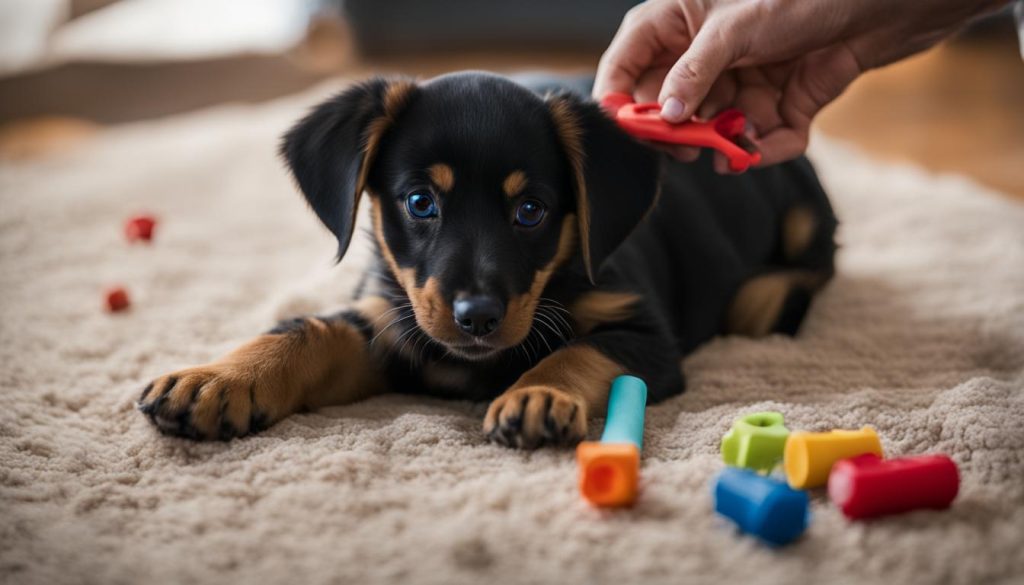
Table 9.1: Summary of Training Techniques for Puppy Biting
| Technique | Description |
|---|---|
| Reinforce positive behaviors | Use rewards and praise to encourage good behavior, such as gentle play and appropriate chewing. |
| Enroll in obedience classes | Seek professional guidance through obedience classes to learn effective training techniques and address specific biting behaviors. |
| Be patient and consistent | Consistently reinforce desired behaviors and provide clear expectations to help your puppy learn proper biting behavior. |
Seeking Professional Help for Dog Biting Issues
If you’ve been struggling to curb your dog’s biting behavior and haven’t seen improvement with at-home training methods, it may be time to seek professional help. Consulting with a Certified Professional Dog Trainer (CPDT) or a Certified Applied Animal Behaviorist (CAAB or ACAAB) can provide expert guidance and tailored training programs to effectively address your dog’s biting issues. These professionals have the knowledge and experience to assess your dog’s behavior, identify underlying causes, and develop a customized training plan.
When looking for a professional dog trainer or behaviorist, find someone who is qualified and experienced in dealing with biting issues. Look for individuals who are certified by reputable organizations and have a track record of success in working with similar cases. You can search online directories or ask for recommendations from your veterinarian or local pet organizations.
A professional consultation can involve a thorough assessment of your dog’s behavior, including gathering information about the triggers for biting and any previous training methods you have tried. The trainer or behaviorist will then develop a comprehensive training program that may include behavior modification techniques, positive reinforcement training, and desensitization exercises.
Don’t forget that seeking professional help is not a sign of failure but a proactive step towards resolving your dog’s biting issues. With the right guidance and training, you can effectively address your dog’s behavior and create a safer and happier environment for both you and your pet.
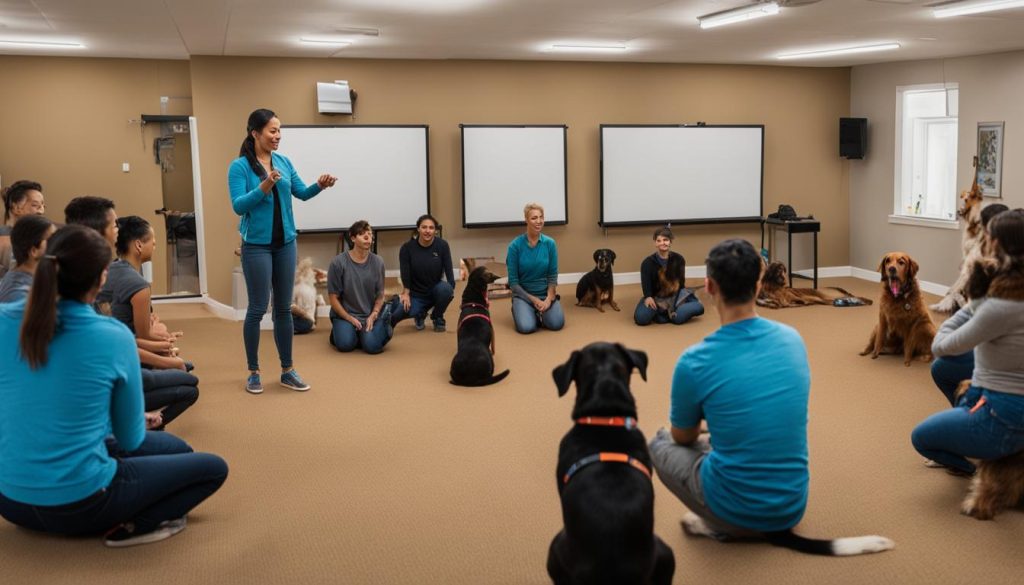
Table: Comparison of Certified Professional Dog Trainers (CPDT)
| Training Organization | Certification Level | Requirements | Skills and Expertise |
|---|---|---|---|
| Association of Professional Dog Trainers (APDT) | CPDT-KA (Knowledge-Assessed) | Minimum 300 hours of dog training experience | Knowledge in basic obedience training, behavior assessment, and positive reinforcement techniques |
| International Association of Animal Behavior Consultants (IAABC) | CPDT-KSA (Knowledge and Skills-Assessed) | Minimum 500 hours of dog training experience | Advanced knowledge in behavior modification, aggression management, and working with complex behavior cases |
| Certification Council for Professional Dog Trainers (CCPDT) | CPDT-KSA (Knowledge and Skills-Assessed) | Minimum 300 hours of dog training experience | Proficiency in training techniques, communication skills, and behavior problem-solving |
Final Thoughts
Teaching your dog to stop biting requires patience, consistency, and positive reinforcement training techniques. By understanding the causes of biting behavior, implementing bite inhibition training, redirecting your dog’s behavior, and seeking professional help when needed, you can effectively teach your dog not to bite.
Start by teaching your dog bite inhibition, which refers to their ability to control the force of their mouthing. Use high-pitched yelps and time-outs to discourage hard bites and provide alternative toys or chew bones for them to bite on.
Additionally, redirecting your dog’s biting behavior with toys, encouraging noncontact forms of play, and teaching impulse control can help prevent them from biting on you or your clothing. Consider using taste deterrents if other training methods do not work, and provide chew toys for teething puppies to redirect their nipping behavior.
Try to be patient with your dog throughout the training process and reward positive behaviors. If you’re facing challenges or dealing with aggression, don’t hesitate to seek professional help from a Certified Professional Dog Trainer or Certified Applied Animal Behaviorist who can provide expert guidance to address your dog’s biting behavior.
FAQ
What is bite inhibition?
Bite inhibition refers to a dog’s ability to control the force of his mouthing. It is the dog’s skill to avoid causing harm when using his mouth during play or interaction.
How can I teach my dog bite inhibition?
To teach your dog bite inhibition, let him mouth on your hands during play and give a high-pitched yelp if he bites too hard. Repeat this process until your dog can play with your hands gently, controlling the force of his mouthing.
What can I do to redirect my dog’s biting behavior?
You can redirect your dog’s biting behavior by substituting a toy or chew bone when he tries to bite your fingers or toes. Encouraging noncontact forms of play, such as fetch and tug-of-war, can also help.
How can I implement a time-out procedure for mouthy dogs?
When your dog bites hard, yelp loudly and immediately remove your hand or get up and move away for a short time-out. Gradually tighten the rules as your dog learns to be even gentler with his mouth. Another option is to keep a leash attached to your dog and use it to guide him to a quiet area for a time-out.
How can I teach my dog to avoid mouthing people?
To teach your dog to avoid mouthing people, substitute a toy or chew bone when he tries to gnaw on your fingers or toes. Encourage noncontact forms of play and teach your dog impulse control through specific exercises.
Are taste deterrents effective for mouthy dogs?
Yes, taste deterrents can be effective for mouthy dogs. You can spray the deterrent on areas of your body or clothing that your dog likes to mouth to discourage him from biting.
How should I deal with puppy mouthing?
Redirect your puppy’s nipping behavior by offering a chew toy as an alternative. Carry a toy with you to provide a suitable object for your puppy to bite on. If your puppy gets overstimulated and starts nipping, remove them from the situation and give them time to calm down.
How important is consistency in training puppy biting?
Consistency is key in training your puppy not to bite. Use rewards and praise to reinforce positive behaviors. If at-home training methods are not effective, consider enrolling your puppy in obedience classes led by a trained professional.
When should I seek professional help for dog biting issues?
If you’re facing challenges in curbing your dog’s biting behavior or suspect aggression, it’s recommended to seek professional help. Consult with a Certified Professional Dog Trainer (CPDT) or a Certified Applied Animal Behaviorist (CAAB or ACAAB) to address more complex behavior issues.



